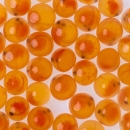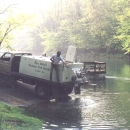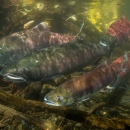What We Do
The Fish and Aquatic Conservation programs work together to deliver resilient habitats, healthy fish, connected people, and strong partnerships. From habitat restoration to aquatic invasive species invasive species
An invasive species is any plant or animal that has spread or been introduced into a new area where they are, or could, cause harm to the environment, economy, or human, animal, or plant health. Their unwelcome presence can destroy ecosystems and cost millions of dollars.
Learn more about invasive species prevention, captive propagation to population assessment and monitoring, our programs are driven by the best advances in applied science and grounded in strong partnerships.
We are a network of cutting-edge conservation offices dedicated to aquatic conservation.
- 71 National Fish Hatcheries raise and stock over 100 million fish every year to support recreational fishing, tribal subsistence fisheries, and the recovery and restoration of imperiled species.
- 7 Fish Technology Centers solve problems in hatchery operations and aquatic resource management.
- 6 Fish Health Centers work on the front lines of helping prevent the spread of aquatic viruses and keeping both wild and hatchery fish healthy.
- 1 Historic National Fish Hatchery and the National Fish and Aquatic Conservation Archives
- The Aquatic Animal Drug Approval Partnership is part of the Fish and Aquatic Conservation program’s fish health work. It is the only program in the United States dedicated to obtaining U.S. Food and Drug Administration approval of new medications needed when raising fish at a facility and in protecting fishery resources.
National Fish Hatchery System: By the Numbers (2023)
In 2023 the National Fish Hatchery System raised and stocked more than 120 million fish and aquatic wildlife for conservation! Since 1872, national fish hatcheries have been raising fish and aquatic wildlife to improve sustainable recreational fishing, support fisheries that have been impacted by a federal dam, recover federally listed threatened or endangered species, fulfil our Tribal Trust responsibilities, and prevent at-risk species from becoming endangered. Explore the full report.
Many states and Tribes rely on the National Fish Hatchery System to stock lakes and rivers with fish for sustainable recreational fishing and to support fisheries that have been impacted by a federal dam. Find out what fish we stocked in your state.




